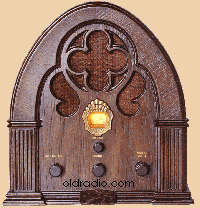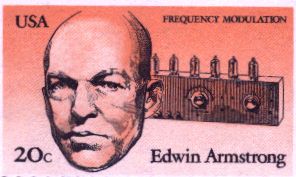The Old CATV Equipment Museum
Links
Museums: Broadcasting
 Andy Cowley's Valves Andy Cowley's Valves
http://g3ynh.info/valves/ajc_valves.html
A set of articles on the subject of electronic valves (tubes) by Andy J Cowley, M1EBV (1948-2012)
 Antique Wireless Association Antique Wireless Association
http://www.antiquewireless.org/
AWA is an organization of some 2,000 members linked by a common interest in the history of electrical and electronic communications. AWA members come from all walks of life and our ranks include teenagers, octogenarians, and beyond in both directions. At one of our meets, you might find yourself shaking hands with a retired broadcast executive or military electronics specialist, an engineer in a high-tech electronics firm, or an eager young man looking for advice on restoring his first radio.
 Broadcast Archive Broadcast Archive
http://www.oldradio.com/
We have used many sources, including FCC files, university lecturers, historical publications and more, and have tried to be as accurate as possible, not repeating many of the myths of the industry (such as the Uncle Don Story) nor histories "manufactured" by promotion departments.
 Chicago Television Chicago Television
http://www.chicagotelevision.com/
Although this site relates specifically to the Chicago television market, it contains an enormous amount of information about the early history of broadcast (VHF and UHF) subscription television systems. Many of these systems were constructed in response to the competitive threat posed by cable television.
 Chuck Pharis Video Chuck Pharis Video
http://www.pharis-video.com/contents
I have built a television camera museum on the back of my house. I will display all my (155)+ cameras there, and also have a place to restore them. I will take photos of all my cameras, and display them here.
 Early Television Foundation and Museum Website Early Television Foundation and Museum Website
http://www.earlytelevision.org/
Over 150 TV sets are on display in a 4200 square foot area. Displays include mechanical TVs from the 1920s and 30s; prewar British sets from 1936-39; prewar American sets from 1939-41; postwar sets from 1945-58; and early color sets from 1953-57. Many of these sets are working. We also have a working 60 line flying spot scanner TV camera. Visitors can see their friends, as they would have appeared on mechanical television in 1930.
 FM Broadcasting Chronology FM Broadcasting Chronology
http://jeff560.tripod.com/chronofm.html
This page shows some of the events in the early history of FM broadcasting in the United States. Note that apex stations referred to on this page used amplitude modulation on VHF frequencies; many of them evolved into FM stations. For dates involving the earliest stations, see also the "earliest FM stations" page at this website.
 History of UHF television History of UHF television
http://uhftelevision.com
This is the history of analog UHF television broadcasting (or at least, the parts of it worth telling). The roots of the site go back to 1999, when Clarke Ingram adapted the article "A Trail of Bleached Bones", written by Mike Dorner, Jr. of Metairie, Louisiana, from the May 1977 issue of VHF-UHF Digest, published by the Worldwide TV-FM DX Association.
 Microwave Radio and Coaxial Cable Networks of the Bell System Microwave Radio and Coaxial Cable Networks of the Bell System
http://long-lines.net/
A huge collection of images and publications documenting the history of the AT&T Long Lines Department, before and since the breakup of AT&T in 1984.
 Museum Broadcast Communications Museum Broadcast Communications
http://www.museum.tv/
Our mission is to collect, preserve, and present historic and contemporary radio and television content as well as educate, inform, and entertain through our archives, public programs, screenings, exhibits, publications and online access to our resources.
 New York's Broadcasting History New York's Broadcasting History
https://www.topviewnyc.com/packages/new-york-s-broadcasting-history
Before the invention of the television, Americans relied on broadcast radio to stay aware of what was happening around them. The use of radio was an important breakthrough for society, and families gathered around their radios to find out about the latest news and to enjoy exciting fictional stories. Broadcast has since evolved, but radio remains an essential part of communication. And through all of the changes in telecommunication, New York City has often been at the heart of it all.
 Order of the Iron Test Pattern Order of the Iron Test Pattern
http://www.tech-notes.tv/oitp/
Through snow and glitches, dropouts, ghosts and now cliff-effect, we survive -- undaunted. Dedicated to "hanging in" under all circumstances, we unsung heroes of the broadcast and cable industries are on the working end of the "show-must-go-on" button -- even if it means using our own finger in place of the fuse (ouch!).
 Philo T. Farnsworth: The Boy Who Invented The Future Philo T. Farnsworth: The Boy Who Invented The Future
http://www.farnovision.com/
While the great minds of science, financed by the biggest companies in the world, wrestled with 19th century answers to a 20th century problem, Philo T. Farnsworth, age 14, dreamed of trapping light in an empty jar and transmitting it, one line at a time, on a magnetically deflected beam of electrons.
 Radiomuseum Radiomuseum
http://www.radiomuseum.org/
A collection of antique radios, public address equipment, and even a few early cable TV boosters contributed by antique-equipment hobbyists.
 Saving History From The Dumpster Saving History From The Dumpster
http://www.hallikainen.org/BroadcastHistory/
These pages are dedicated to preserving a historical record of broadcast equipment. Others are doing an excellent job in recording other aspects of the history of broadcasting. As we find them, we'll add links to them. This site consists of scanned manuals and catalogs of broadcast equipment. In October 2005, the site was changed from hand coded HTML to a wiki so you can now edit pages, add pages, add scans, etc.
 Spark Museum of Electrical Invention Spark Museum of Electrical Invention
http://www.sparkmuseum.org/
The Spark Museum of Electrical Invention offers an exciting and educational experience for audiences of all ages. Compelling, interactive exhibits spanning four centuries of scientific achievement and cultural heritage are featured in a world-class collection of unique objects including the giant "MegaZapper" Tesla Coil which produces nine-foot lightning bolts! The Spark Museum displays the inventions and innovations that changed the course of human history.
 Stay Tuned: Crystal Radio & Tube Radios Stay Tuned: Crystal Radio & Tube Radios
http://www.crystalradio.net/
Crystal Radios, Crystal Set, Crystal Sets, Catswiskers, Science Fair Crystal Radios, and much more! Dedicated to the preservation, experimentation, and advancement of crystal radios.
 Television History - The First 75 Years Television History - The First 75 Years
http://www.tvhistory.tv/index.html
One of the greatest 20th century inventions. Learn about the history of TV-set design, development and marketing.Photographs of television sets from around the world, year-by-year links to important facts, magazine covers and advertising.
 TV Boxes VHF signal boosters and UHF converters TV Boxes VHF signal boosters and UHF converters
http://www.tv-boxes.com/
Television got its start in the U.S. in the Big Cities. In the late '40s and early '50s, unless you lived in or near New York City, Philadelphia, Chicago, Los Angeles, or one of the other major population centers, TV reception was likely to be an iffy thing. There were only about 100 TV stations in the entire US. People put up big rotatable antennas to capture the weak signals from 50 or 100 miles away, and augmented the tuners in their TV sets with signal boosters.
 Video Preservation Website Video Preservation Website
http://videopreservation.stanford.edu/
The purpose of this site is to encourage the preservation of historic video using the mature technology of digital capture [video capture cards], to create individual video files, which would be stored on mass storage media such as hard drives (HDD) or data tape (DT). The individual video files created can be copied without loss -- forever. As with all computer equipment, the storage media must replaced when (a) system components begin to fail with age or (b) the technology advances. The digital files would be migrated to new storage with no loss due to recapture, noise, haste, error or budget restrictions.
|
|
